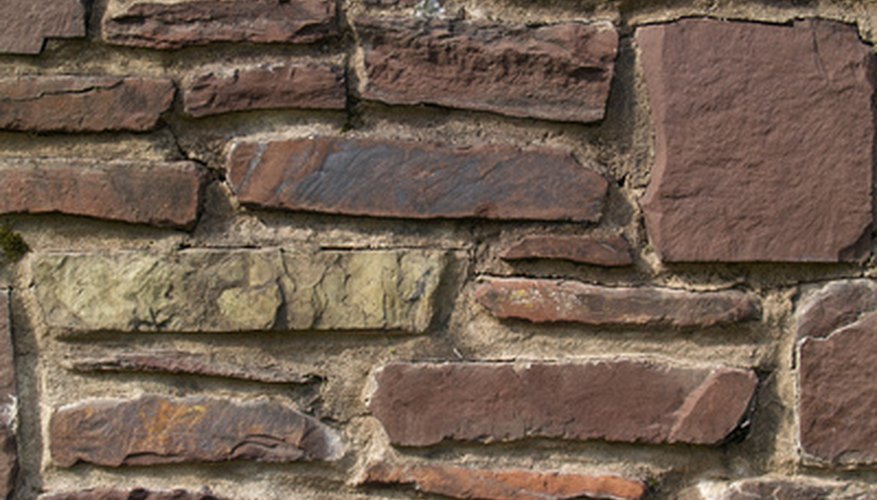Masonry walls are a common sight in many parts of the world. They are often used to divide up agricultural land or separate adjacent properties. The "load" of a masonry wall is simply the force that the masonry wall exerts on the ground on which it rests. An understanding of masonry wall loads is important in designing walls and in ensuring that the walls have sufficiently robust foundations.
Measure the length of the wall using the tape measure. Make a note of this figure.
- Masonry walls are a common sight in many parts of the world.
- Measure the length of the wall using the tape measure.
Measure the width of the wall using the tape measure. Make a note of this figure.
Measure the height of the wall using the tape measure. Make a note of this figure.
Multiply the three previous attained figures together. The product of these will be the volume of the wall.
Multiply the volume of the wall by the density of the type of stone the wall is made of. The density of granite is around 0.077 Kilogram (0.17 pounds) per cubic foot. This gives you the mass of the wall. Make a note of this value.
- Measure the height of the wall using the tape measure.
- This gives you the mass of the wall.
Multiply the mass of the wall noted above by the acceleration due to gravity. This is around 32.17 feet per second squared. This gives you the load of the wall.
TIP
You can use metric units if you wish, but you must remember to use a consistent set of units for all your calculations.
